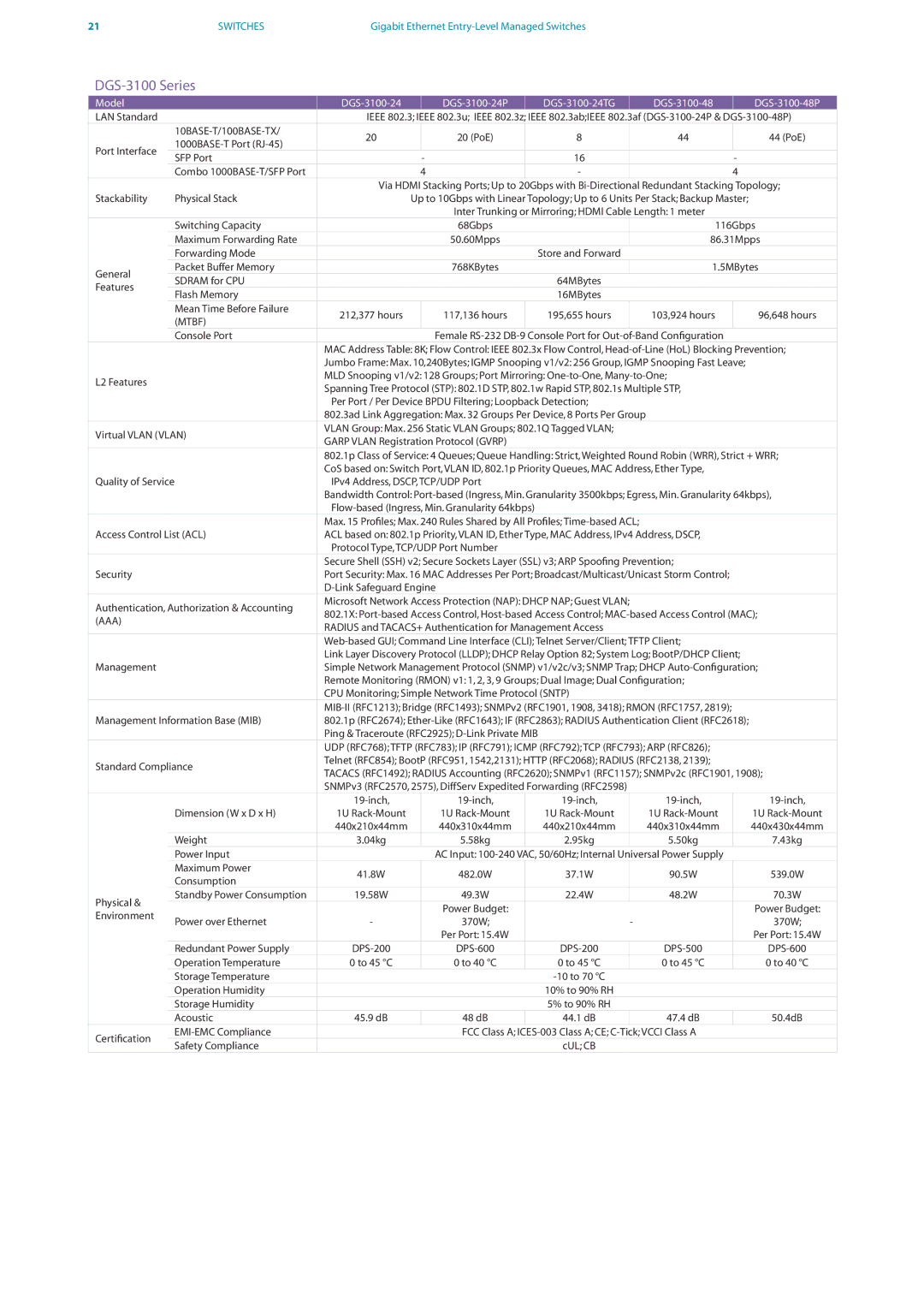DES-7200 specifications
The D-Link DES-7200 is a versatile, high-performance Ethernet switch designed for enterprise networks that require efficient data management and enhanced connectivity. This switch is manufactured to meet the demands of modern networking environments, offering a combination of scalability, reliability, and advanced features.One of the key features of the DES-7200 is its support for 10/100/1000 Mbps Ethernet speeds, allowing it to easily handle high-bandwidth applications and large-scale data traffic. Its switching capacity, which can support a substantial number of simultaneous connections, ensures that the switch can keep up with the increasing demands of users and devices within a network.
The DES-7200 incorporates advanced Layer 2 and Layer 3 switching capabilities, making it suitable for a wide range of networking scenarios. This includes support for Virtual LANs (VLANs) which allow network administrators to segment networks for improved performance and security. The switch supports up to 4,096 VLANs, enabling efficient traffic management and isolation of sensitive data.
Another notable feature of the DES-7200 is its robust security protocols. It includes IEEE 802.1X port-based authentication, ensuring that only authorized users can access the network. Additionally, it supports Access Control Lists (ACLs) and Denial of Service (DoS) attack prevention measures, further enhancing network security.
D-Link has also integrated quality of service (QoS) functionality into the DES-7200, allowing for better handling of voice, video, and mission-critical data applications. With the ability to prioritize traffic, administrators can ensure a seamless and uninterrupted user experience, minimizing latency and congestion in busy network environments.
The DES-7200 features a user-friendly web-based interface for easy management and monitoring of the switch. This interface allows network administrators to configure settings, monitor performance, and troubleshoot issues quickly and efficiently.
Scalability is another significant characteristic of the D-Link DES-7200. It offers stacking capabilities, which means multiple switches can be managed as a single unit, simplifying network management and expanding network capacity without requiring excessive configuration.
Overall, the D-Link DES-7200 is a reliable choice for organizations looking to enhance their network infrastructure. With its combination of speed, security, and management capabilities, it stands as a robust solution for both small and large-scale enterprise networks.
